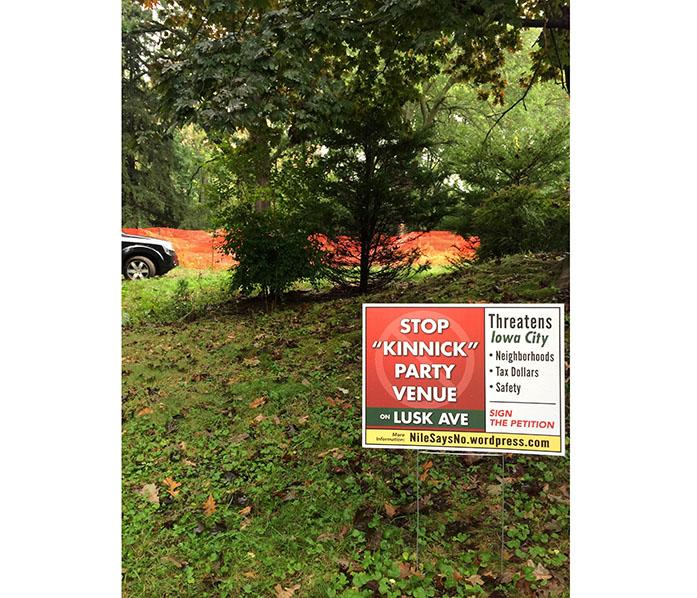The first thing you notice en route to 101 Lusk Ave. are the signs. Red and white, imploring STOP ‘KINNICK’ PARTY VENUE”; almost every house in a quarter-mile radius has a sign up. The second thing you notice is that the plot of land at 101 Lusk is small; it looks like the future location of a three-bed, two-bath home for a wholesome family to raise their kids.
Instead, pending a Sept. 30 hearing by the Iowa City Board of Adjustments, 101 Lusk will be the location of a 7,500-square-foot replica of Kinnick Stadium. Neighbors think the house will break with the family-friendly character of the neighborhood, sticking out like a sore stadium.
A cursory glance around the neighborhood confirms that a house that large would look incredibly out of place, even if it didn’t look like a football stadium. Further concerns about water and sewage infrastructure have been addressed, but neighbors are still uneasy about its use as a tailgating venue. While property owners Sandy and Reed Carlson have signed an affidavit confirming that the space will not be rented out for commercial purposes and that they will adhere to city ordinances regarding tailgating and parties, this doesn’t seem to be enough for their neighbors.
I’m a live-and-let-live type of person; I think all deserve the right to live their best lives however they see fit as long as they aren’t hurting anyone. But where I find pause is in the classification of the proposed house as a residential building. The Carlsons have openly admitted they want this second home as a venue for tailgating, though they also cited being able to visit family who live locally and have affirmed that the house will be lived in. The proposed design places all the bedrooms on the second floor, with the ground floor being an extended entertaining space. This, plus the design homage, suggests that this is a house built for partying first and as a residence second.
Classifying this building as a residence, as opposed to a commercial venue, reduces property taxes significantly; as of 2012, commercial properties in Iowa paid an average of 2.25 times more in taxes than their residential counterparts. The project’s function as a home is incidental to its function as a party venue and seems more like a way to evade higher taxes than a genuine assessment of the property itself.
I don’t want to cast aspersions on the Carlsons or presume to know their true intentions. However, I do believe that when a property such as this is built, it invites additional scrutiny, particularly given the location. The previous residence at 101 Lusk had a square footage around 1,700, approximately one-fifth of the size of the proposed Kinnick House.
Properties in the neighborhood are small and closely clustered, making a major change like this to the neighborhood one that will be deeply felt. And despite the Carlsons’ affidavit, the potential for abuse of the location as a commercial-event venue is high, especially given the novelty factor of its design.



